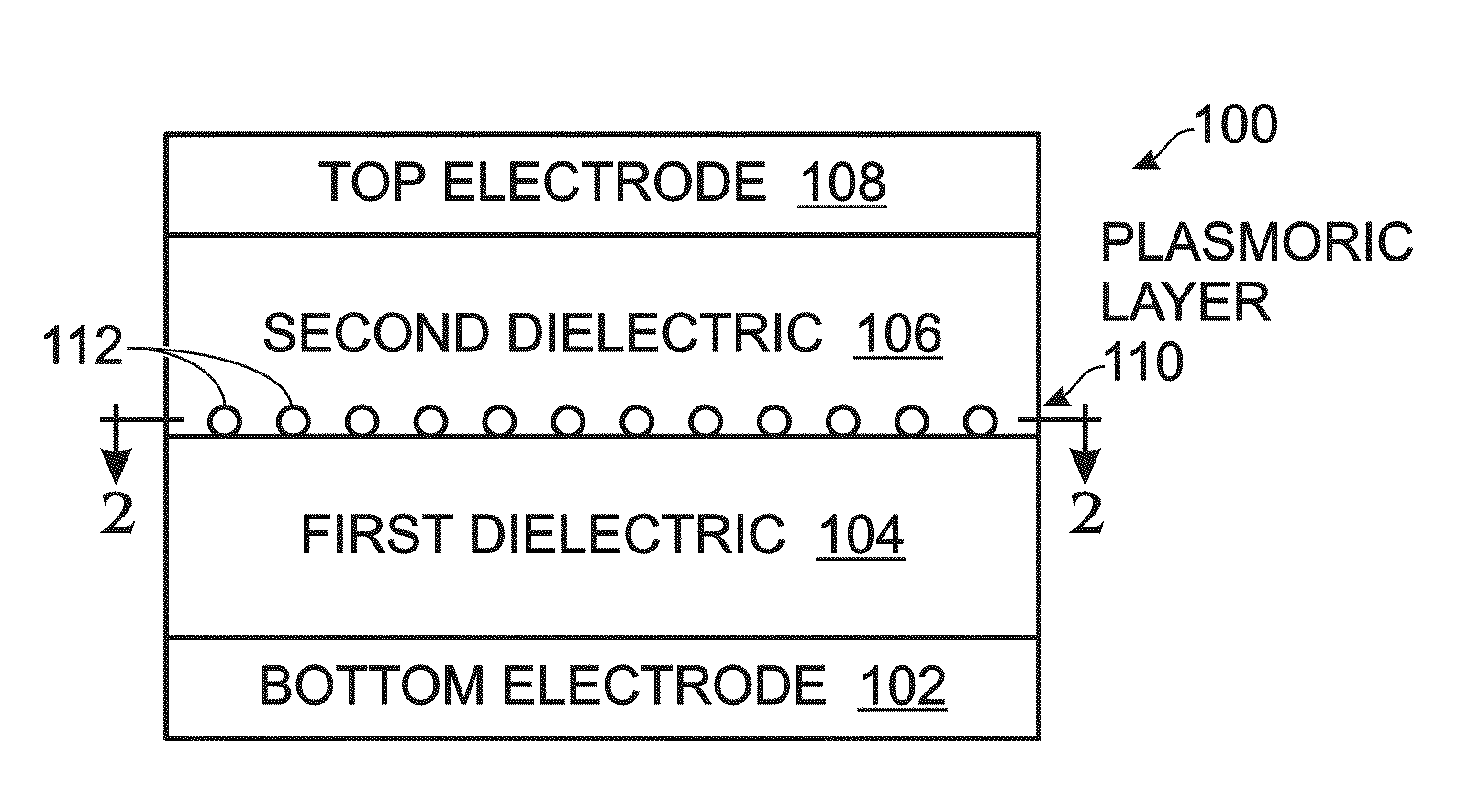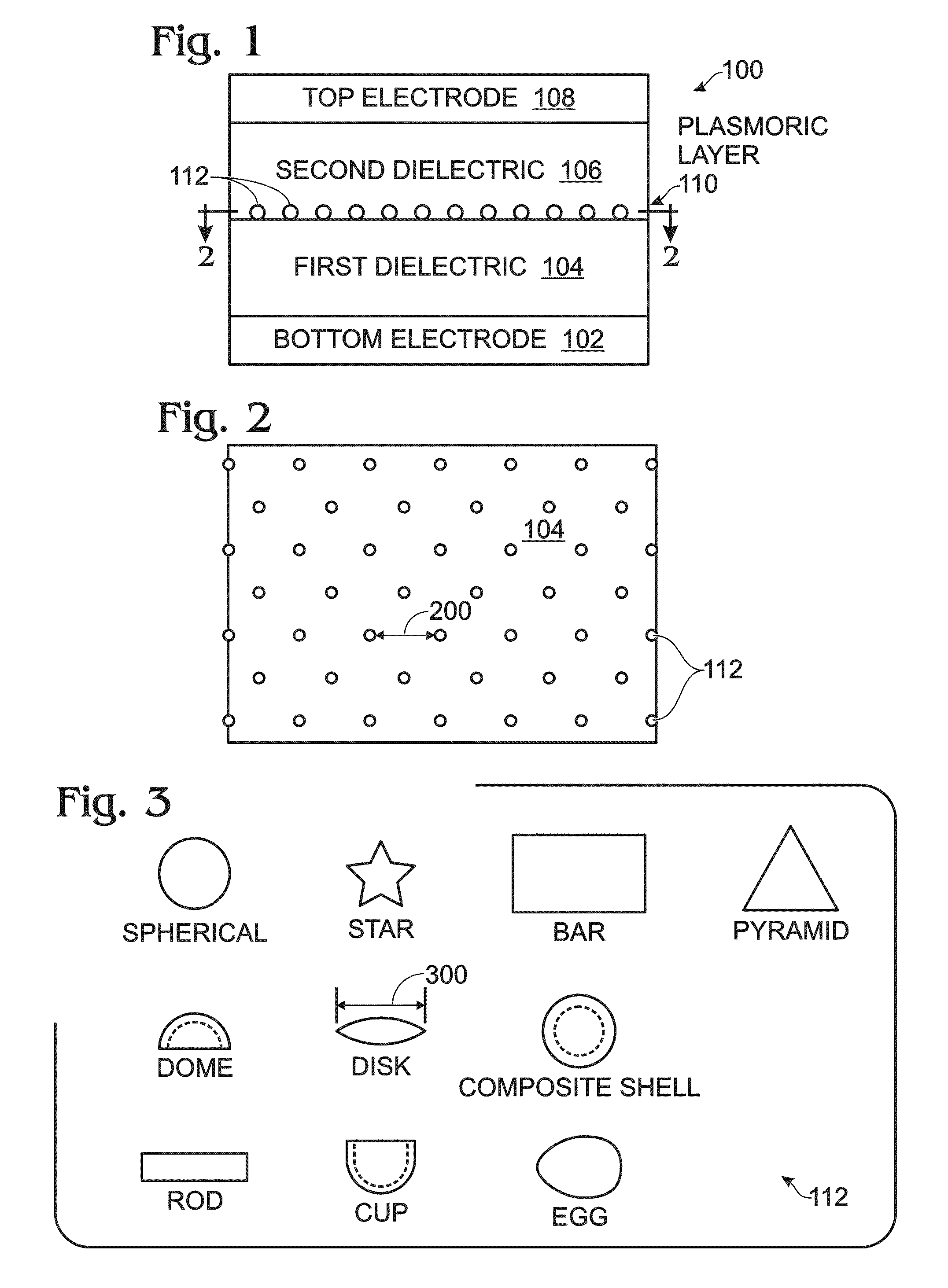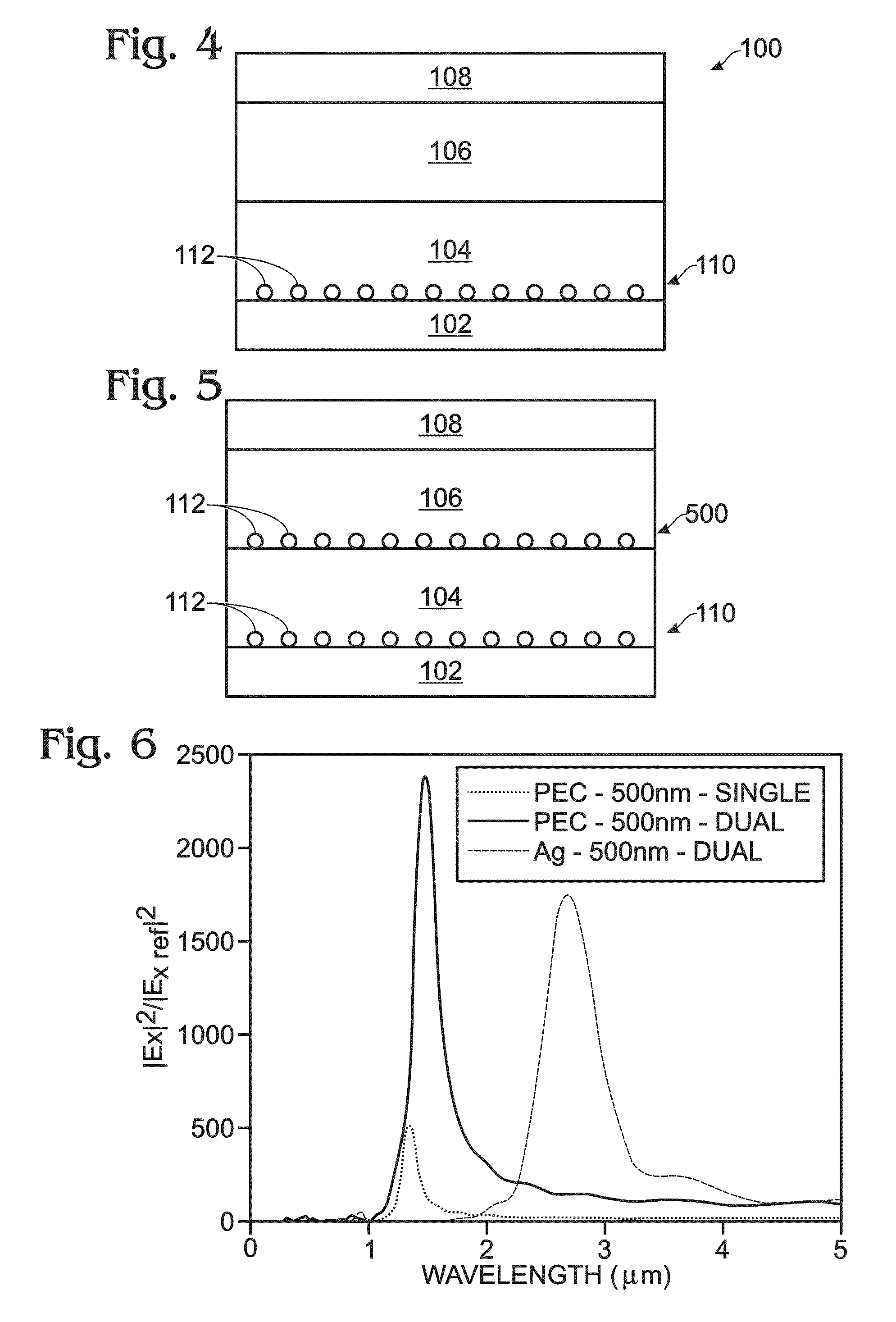Color-tunable plasmonic device with a partially modulated refractive index
a plasmonic display and partially modulated technology, applied in the field of electronic visual display devices, can solve the problems of wasting the available light energy provided by the surroundings, requiring additional power to overcome the ambient light of the display, and display technologies all have disadvantages or challenges to overcome, so as to achieve the effect of reducing power consumption and fastness for video applications
- Summary
- Abstract
- Description
- Claims
- Application Information
AI Technical Summary
Benefits of technology
Problems solved by technology
Method used
Image
Examples
Embodiment Construction
[0031]FIG. 1 is a partial cross-sectional view of a color-tunable plasmonic device with a partially modulated refractive index. The device 100 comprises an electrically conductive bottom electrode 102, and a first dielectric layer 104 overlying the bottom electrode 102. The first dielectric layer has a refractive index that is non-responsive to an electric field. Some examples of first dielectric materials include SiOx, SiNx, SiOxNy, MgF2, CaF2, SiOC, Teflon® AF, and organic polymers. However the device is not necessarily limited to just these materials. A second dielectric layer 106 overlies the first dielectric layer 104, having a refractive index responsive to an electric field. Some examples the second dielectric material include ferroelectric liquid crystals, nematic liquid crystals, LiNbO3, Hg2Cl2, LiTaO3, BBO, KTP, and organic electro-optical crystal 2,6-dibromo-N-methyl-4-nitroaniline. Again, the device 100 is not limited to just these materials. The change in refractive ind...
PUM
| Property | Measurement | Unit |
|---|---|---|
| size | aaaaa | aaaaa |
| refractive index | aaaaa | aaaaa |
| refractive index | aaaaa | aaaaa |
Abstract
Description
Claims
Application Information
 Login to View More
Login to View More - R&D
- Intellectual Property
- Life Sciences
- Materials
- Tech Scout
- Unparalleled Data Quality
- Higher Quality Content
- 60% Fewer Hallucinations
Browse by: Latest US Patents, China's latest patents, Technical Efficacy Thesaurus, Application Domain, Technology Topic, Popular Technical Reports.
© 2025 PatSnap. All rights reserved.Legal|Privacy policy|Modern Slavery Act Transparency Statement|Sitemap|About US| Contact US: help@patsnap.com



